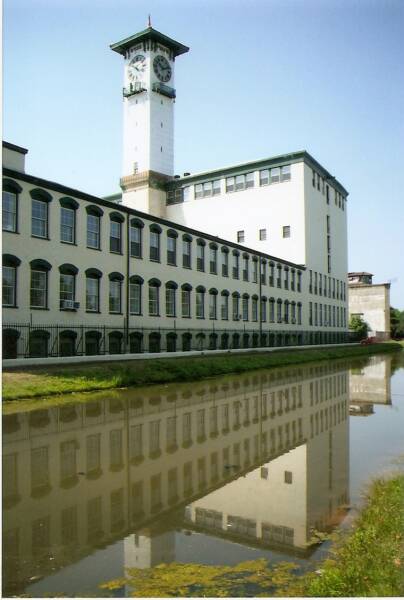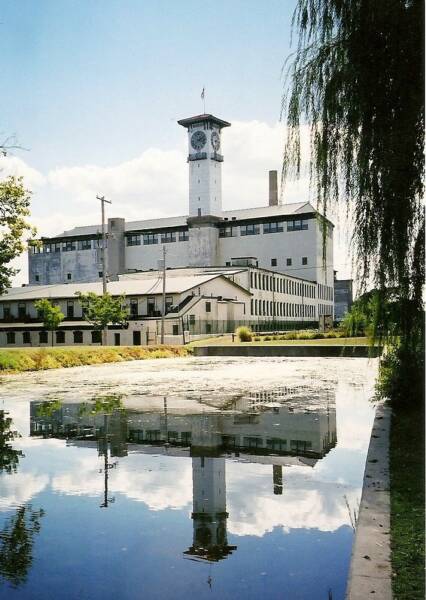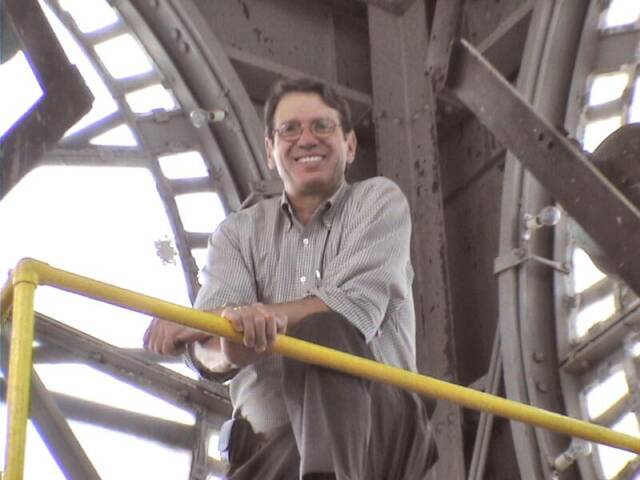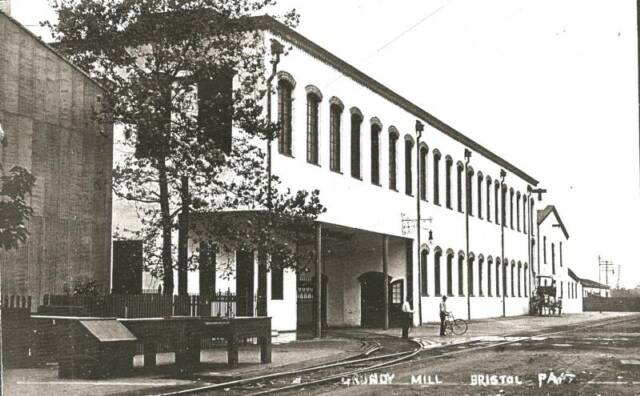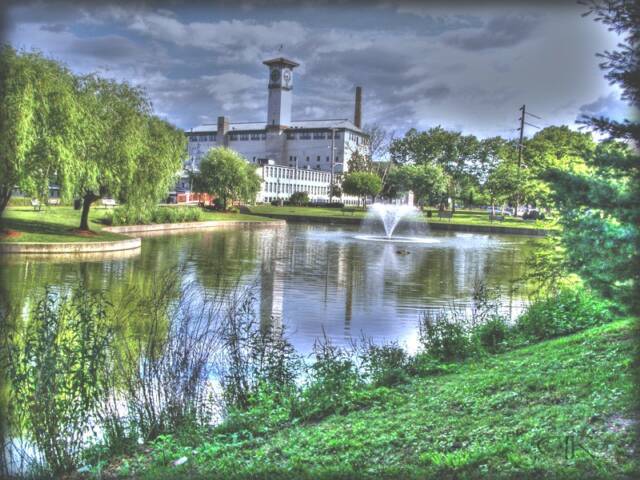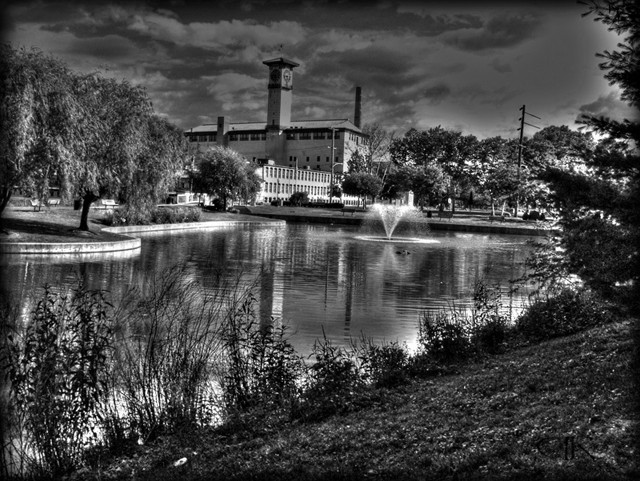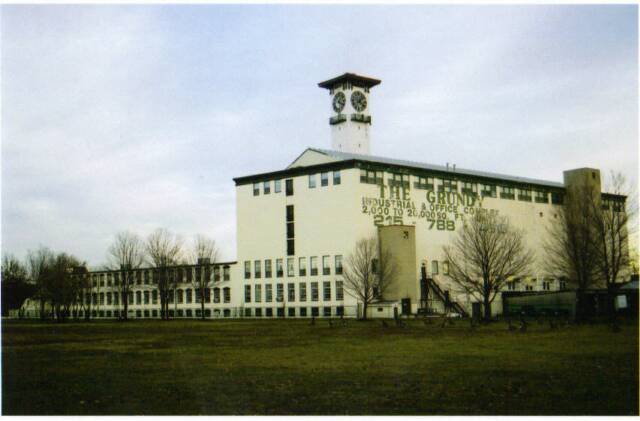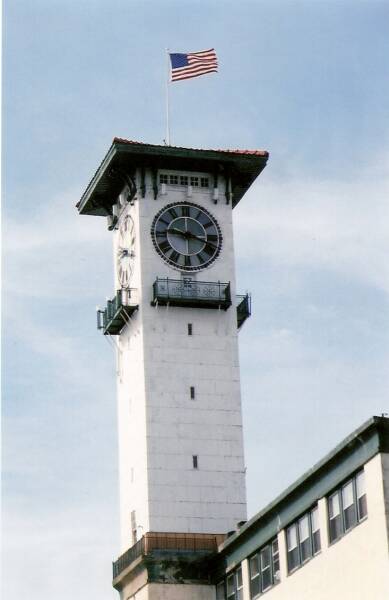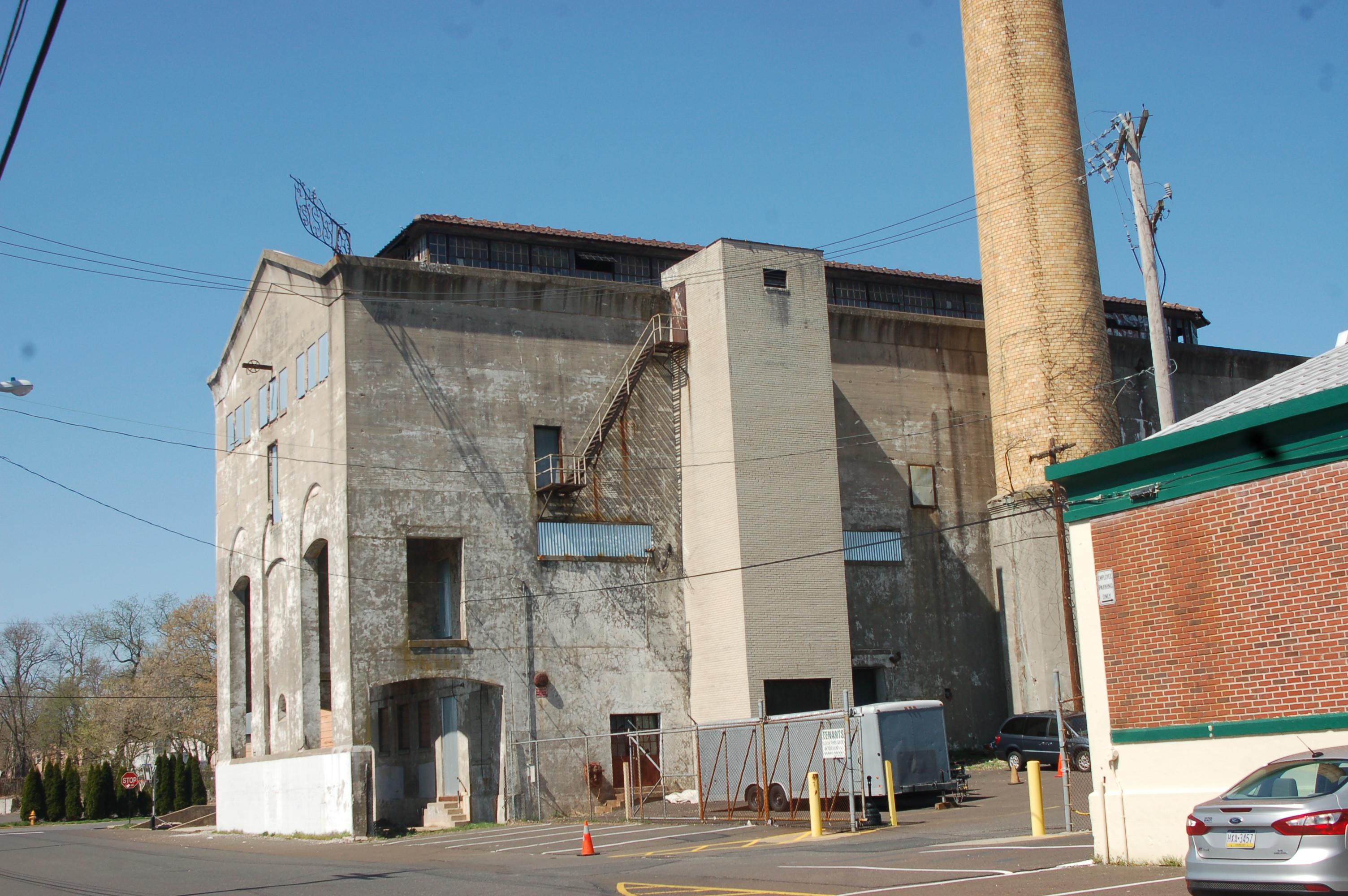~~~~~~~~~~~~~~~~~~~~~~~~~~~~~~~~~~~
Days may be numbered for Grundy Powerhouse;
Bristol Borough Council,
Bucks RDA working on grant to demolish building
Wednesday, April 23, 2014
By Jeff Werner
BucksLocalNews.com
BRISTOL BOROUGH – Once envisioned as 26 upscale condominiums, the deteriorating Grundy Powerhouse – a relic of the borough’s industrial past - may be seeing its final days.
The borough council on April 14 voted to partner with the Bucks County Redevelopment Authority in a grant application to demolish the building and its iconic smoke stack overlooking the historic Delaware Canal and located next to the Grundy Mill and clock tower.
“We [the borough and the RDA] have been trying to market that building for years,” said Council President Ralph DiGuiseppe. “There was a plan to renovate it and put up luxury condominiums. It was a beautiful plan. There was some grant money involved, but they just couldn’t pull it off.”
At that point, said the council president, the RDA got involved and bought the building back from the developer. Since then, the RDA has been advertising it and trying to find a buyer, he said. “At this point the recommendation is to take it down.”
Bob White, the executive director of the Bucks RDA, said his agency will be applying through the county for a $350,000 federal Housing and Urban Development grant to demolish the structure. If it’s successful, work could begin this year.
“Once we’ve torn it down, we can certainly entertain several different things. The idea would be to work toward some kind of commercial or residential use,” said White. “It’s certainly is an ugly eyesore in the town. And with that stack, no one wants to be responsible for that.”
White said the RDA has certainly tried to market the building for reuse, noting that it’s involvement in the property has stretched over a 10 year period.
At one point the RDA had fixed up the building and put in a successful grant to transform it into a museum. “But the museum people decided they couldn’t afford to operate it after we got it fixed up,” he said.
When that plan failed to materialize, the RDA again took on the job of marketing the structure and eventually sold it to a developer who had a plan to transform it into rooftop luxury apartments.
“It was a beautiful design, but then the market fell out” of the housing industry, said White, and dashed those plans.
The RDA purchased the property back from the developer about a year ago.
“We’ve tried everything. Hopefully if we take the building down, we can get something done with it,” said White. “At the very least it could become a parking lot for the building next door if they bring more people in and need more parking.”
White said the site would lend itself nicely to a residential use given its location across from the Bristol Borough train station.
The powerhouse dates from Bristol's key period of industrial and population growth, from 1876 to 1930, and reflects Bristol's role as a premier industrial center of Bucks County.
It was built as part of the Grundy Mill Complex – a series of buildings constructed over a period of 55 years beginning in 1876 after William H. Grundy moved his woolen industry from Philadelphia to Bristol.
The Grundy Mill complex consisted of a number of buildings which operated as one unit for the milling, storage, and power for the worsted mills of the William H. Grundy Co.
William Hulme Grundy, who had family ties in the Bristol area stretching back several generations, began in the woolen industry in Philadelphia in 1870. In 1876 he moved his operation to the newly constructed Bristol Worsted Mills.
First built as the Bristol Worsted Mills, the buildings ranged in height from one to seven stories, and the most distinctive feature of the complex is the clock tower, dating from 1911. The mill was the first of five large manufacturing facilities built by the Bristol Improvement Company beginning in 1876.
This facility was the most successful of the textile operations launched in Bristol in the 19th century and by 1920 it was the largest employer in Bucks County. Grundy Mill remained in operation until 1946, when the facility was sold; it has since been converted to other industrial operations.
According to the Third Industrial Directory of Pennsylvania, 1919, the Grundy Mill complex employed more than 850 workers, making it, by far, the county's single largest employer. Its importance in Bristol was drastic: the Grundy Mill employed approximately 30 percent of the town's industrial work force.
~~~~~~~~~~~~~~~~~~~~~~~~~~~~~~~~~~~~~~~~~~~~~~~
Old Grundy Powerhouse to be demolished in Bristol Borough,
making way for a parking lot
By Petra Chesner Schlatter
pschlatter@buckslocalnews.com
BRISTOL BOROUGH >> The deteriorating Grundy Powerhouse, which once energized the sprawling Grundy Mill complex during the borough’s industrial heyday of the late 1800s and early 1900s, will crumble into the dust of history sometime this spring.
In a 4-2 vote on April 13, the borough council voted to authorize the Redevelopment Development Authority (RDA) of Bucks County to enter into a sales agreement with Fred Baumgarten, owner of the Grundy Commons, who plans on razing the building and its towering smoke stack and replacing it with a parking lot that will service the Grundy Commons complex located next door.
Under the agreement, Baumgarten will spend upwards of $300,000 to demolish the building and smoke stack located next to the historic Delaware Canal and across the street from the train station, relieving the borough of a potential liability and returning the property to the tax rolls.
The work will take place no later than May 25. “I’m hoping it will be sooner,” said Bob White, executive director of the RDA.
In the next 60 days, Baumgarten will be required to present and secure approvals from council for a landscaping and sidewalk plan for the site. As part of the deal, he’ll also be required to spruce up an existing parking lot next to the building with new sidewalks and shrubbery.
Councilman Leo Plenski made the motion to set the process in motion. The building, he said, is in “deplorable condition” and needs to come down.
Voting in favor of the sale were Council President Ralph DiGuiseppe and councilmembers Greg Pezza, Lorraine Cullen, Robyn Trunell and Leo Plenski Jr. Voting no were councilmembers Tony Devine and Dave Girard.
Prior to the motion, DiGuiseppe urged council to vote in favor of the sale.
“We tried to market this building, but we haven’t found any takers,” said DiGuiseppe. “Right now it’s just sitting there waiting for an accident to happen. Now it will go back on the tax rolls as a lot, which the school district and borough will collect some money from, but it’s still better than having this building sit as it has for the last 30 years. I’m asking council to get this done for the people who live there and have to see this every day,” he said.
Council members Girard and Devine, however, asked for more time to find a buyer willing to renovate and preserve the building. Both voted against the motion.
Girard asked council to consider delaying the decision for six months, suggesting that the $200,000 being asked for by the RDA may have dissuaded potential developers from pursing a deal and investing in the property.
“If you would give me six months, at my own expense I’ll put a couple of signs up there – free building, bring your ideas – and see if we can get something done,” said Girard. “I called a local developer and I asked, ‘How would you like that building for free?’ They said they’d even give us a little money for it. So I asked, ‘What would do you with it – would you tear it down or try to renovate it?’ He said he would renovate it. Just by making one phone call I got a local guy interested.”
DiGuiseppe corrected Girard, saying that the RDA had marketed the building without a dollar amount attached, but still found no takers.
The problem, he said, is it’s nearly cost prohibitive to renovate the property, costing a minimum of $6 million to $8 million. “I don’t know of any local person in Bristol – builder or developer – that has $6 million to $8 million to renovate this property.”
DiGuiseppe then asked Girard, “If in six months Mr. Baumgarten doesn’t want to do the deal, are you going to use taxpayer dollars to tear it down? We have a deal on the table that’s not going to cost this borough one dollar to tear this building down.”
Later, when Girard asked Baumgarten if his deal would still be on the table in six months, Baumgartner responded with an emphatic, “no.”
He told Girard, “I have been inside that building on a number of different occasions over the past 30 years and I can assure you that that building cannot be rehabbed. It is so decrepit now that it’s not only a danger to children who break-in, it’s a danger to pedestrians who walk by. The top of it is beginning to crack off.
“The building is an eyesore,” he continued, adding that it hasn’t been a productive building for 50 years and has been vacant for more than 30 years.
“This is an accident waiting to happen. It is in the best interest of the community that it be demolished,” he said.
Baumgarten will use the site to accommodate employee parking needs as additional space is rented at the commons, which boasts the iconic clock tower.
For the past decade, the RDA has attempted unsuccessfully to market the building for reuse, according to White.
At one point it had fixed up the building and put in a successful grant for the Mercer Museum to transform it into a museum and exhibition space. “But the museum people decided they couldn’t afford to operate it,” said White.
When that plan failed to materialize, the RDA again took on the job of marketing the structure and eventually sold it to a developer for $200,000 who had a plan to transform it into rooftop luxury apartments.
“It was a beautiful design, but then the market fell out” of the housing industry and dashed those plans, said White.
The RDA purchased the property back from the developer about two years ago for $200,000.
The powerhouse dates from Bristol's key period of industrial and population growth, from 1876 to 1930, that saw the transformation of Bristol into a premier industrial center in Bucks County.
It was built to provide power to the Grundy Mill Complex – a series of buildings constructed over a period of 55 years beginning in 1876 after William H. Grundy moved his woolen industry from Philadelphia to Bristol. The complex consisted of a number of buildings which operated as one unit for the milling, storage, and power for the worsted mills of the William H. Grundy Co.
Preserving the PAST and Fortifying the FUTURE
by Cate Murway
Grundy Brothers and Richard Campion will be manufacturing their goods in Bristol instead of Philadelphia. The New Woolen Mill for the manufacture of worsted yarns, the “Bristol Worsted Mill”, will be built!
This was record-breaking news on September 14, 1876.
The task of spirit rebuilding and recovery had begun when the coal port and ship building businesses had waned. Industry in this town would have remained insignificant unless larger manufacturers were attracted to encourage the production development once again. Items produced have included wallpaper, patent leather, cast iron, paint products, ice cream, farm seeds and distilled liquors.
The initial telephone switchboard in the county was installed at 232 Mill Street in 1883 and the Grundy Mill had one of the first phones. You can still hear them now!
In 1910, work was begun on the latest addition made of concrete and steel construction unique for its time and unduplicated today, to the mill of William Hulme Grundy & Company. The front offices off Canal Street were enlarged and entirely remodeled with elegant mahogany paneling, reflecting an individual oasis of calm rationality, in which strength and elegance were the touchstones. After its career as a textile mill, an extremely successful operation for milling, storage and power, part of the complex was used to warehouse the Atlantic Tea Packing Company inventory. The buildings date from the key periods of industrial and population growth, reflecting Bristol’s role as a premier industrial center of Bucks County.
Frederic H. Baumgarten, who has given most generously for the improvement of the town and is dedicated to protecting the irreplaceable, bought the 335,000-square-foot four building mill complex in 1982 rather than relocate his Majestic Mills.
The clock, built in 1911, commissioned by U.S. Senator Joseph R. Grundy, was manufactured by the Seth Thomas company, one of the most prolific and longest established clock makers in the United States (nearly 200 years) having an impeccable reputation for designing and producing the masterfully crafted renowned tower clocks including the massive timepiece at Grand Central Station in New York.
Time would literally have stood still if the 75-year-old [at that time] structure that dominated the Borough skyline as the centerpiece of the burgeoning revival effort in Bristol Borough hadn’t received a $20,000 facelift, courtesy of the Bristol businessman, Fred Baumgarten.
From the Bucks County Courier Times Wednesday September 17, 1986 front page article written by Staff Writer, Eliza Newlin, “I felt challenged, I felt privileged, I felt a responsibility to restore it,” said Baumgarten, “I got caught up in the excitement that I think is sweeping Bristol, and I wanted to do my fair share. This rededication is not really to honor our past. It is far more, so that we may use our past as the beacon to follow into navigating into the future.”
“A powerful agent is the right word. Whenever we come upon one of those
intensely right words in a book or newspaper the resulting effect is physical as well as spiritual, and electrically prompt”. – humorist/ writer “Father of American literature”, Mark Twain [born Samuel Langhorne Clemens 1835-1910]
The right intensely powerful words were spoken, “Bristol is HOT!”-
Frederic H. Baumgarten, President of the Grundy Commons.
Founded in 1681, Bristol had become an early industrial center because of its canal link in 1800 to Trenton and northeastern Pennsylvania and a railroad connection by the 1830's. The borough's handsomely situated and impeccably preserved Victorian-era homes, diverse in tradition, charm and character draw tourists to scenic spots along the Delaware River to this day.
Joshua Pierce, founder and first director of the Bristol Improvement Company, constructed the 1st industrial buildings and was instrumental in the transformation of Bristol from a canal-oriented town to a manufacturing center. In less than 50 years of his first activities, the industrial center of Bristol was economically strong and viable. When he ran into financial difficulty, William Hulme Grundy, who filled the office of chief burgess [representative] of the town for two terms assisted him. Upon William Grundy’s sudden death from heart disease on October 26, 1893, Joseph Ridgway Grundy, born in Camden, NJ in 1863 obtained sole ownership and continued his father’s and Pierce’s tradition of industrial expansion. Grundy, public spirited and broad-minded, succeeded in establishing and maintaining a business by sheer force of character, by his boldness, his self-faith and decidedly 100% commitment. The Grundy Mill’s Complex was by far the county’s largest single employer, dramatically impacting the workforce, the pinnacle of in-town growth.
The stark seven-story reinforced concrete, megalithic structure, monumental in scale to the surroundings, loomed far above the growing working class neighborhoods of primarily row-type housing and visually depicted the dominant hold Grundy and his company had on Bristol. This reinforced the Grundy dichotomy of controlling power vs. his civic pride and obvious public contribution.
"I was brought up with the old-fashioned ideas of doing right, fearing no man and loving my country and I have tried to do all three." -Senator Joseph R. Grundy
The 13.8- acre Bristol Borough Industrial District is roughly bounded by the former mainline of the PA RR developed 1910-1911 on the NE, former bed of the Delaware Division of the PA canal on the NW and Beaver Street on the SE. It consists of 6 factory complexes, a total of 36 buildings and 7 structures. Most of the significant resources are constructed after 1885 and are located in the 12-acre Grundy Mill Complex, part of the National Register of Historic Places located in the “Mill District”. These monuments to history were built of the latest technology and safety standards. Today these buildings are significant as visual landmarks and reminders of the industrial apex and the resurgence of
manufacturing activity and the continuation of local employment.
The property reveals fascinating layers of history and culture; a suggestive time capsule, fully documented, representing an unbroken chain from its primary construction.
Industrial leadership, historic preservation with retention of history and authenticity, civic pride and revitalization surges through the Borough and Baumgarten’s vast expanse of the Grundy Commons is primed and ready to provide additional new sources of office, warehouse and distribution space for this former industrial town. He, too has 100% commitment to his organization’s goals and projects, driven by the vision and the expectations to meet both current and future needs. Fred has maintained the airy confines of the Grundy Commons as a utilitarian and efficient complex, relevant to the 21st century with pedestrian and visitor appeal, while retaining the significance, appearance, and integrity of the richly representative architectural structures and reuse of infrastructure to insure that the spirit and direction of the Borough are founded upon and reflected in its historic heritage. The ongoing building system updates, alterations in a sensitive and appropriate manner, require his creativity to respect the original design and materials, striking a balance between retaining original building features and accommodating new technologies and equipment while meeting applicable codes and tenant needs, carefully preserving the original aesthetic. History has been preserved in more than archaeological fragments.
This stands as a statement to Fred’s ingenuity in recognizing the importance of a healthy manufacturing climate and the continued concept of the unique development available in the evolution of industrial architecture to interpret and preserve the key sites in American labor history and the history itself.
“It is he who, at the very start, makes up his mind to win in spite of any adverse conditions – the man who, instead of surrendering to obstacles, rides over them or through them – it is he that succeeds in life!"
Orison Swett Marden [1850-1924], considered to be the true founder of the American success movement.
p.s. A special thank you to Harold and Carol Mitchener for answering my questions [all of them] and for their unconditional, benevolent help always!
Stay on the “Clock Tower” watch……….
Cornerstone of our heritage.....
Stepping stone for our future.
The Grundy Commons……
It's got a style, a culture, a spirit committed to vigilance...
................with a luster of sophistication!
Proud of its past. Prepared for its future.
The Grundy Commons……
An extraordinary and diverse environment of business
…..with a renewed luster of flavor and character.
25 truckloads of cement
... and the waterfront town’s treasure with a sense of style and place
is always a rejuvenated custom professional & industrial space!
...a place of history, patina, texture that reveres its past.
... There’s a lot of exciting business going on in there.
.. a mirror on the past with a window always on the present
The Grundy Commons……
The Grundy Commons……
a commercial property that reveals fascinating layers of history and culture.
Kindness and integrity can have an amazing ripple effect................
....... picture your business here.......
immerse yourself in a positive society!
Stay on the “Clock Tower” watch……….
Cornerstone of our heritage.....
Stepping stone for our future.
The Grundy Commons……
The property reveals fascinating layers of history and culture; a suggestive time capsule,
fully documented, representing an unbroken chain
from its primary construction, linking to the future.
It takes vision, faith and determination, patience and commitment, and good old-fashioned hard work
to produce in today's economy.
The Grundy Commons is the logical location,
with experience you can trust
to impact your business for years to come.
Stay on the “Clock Tower” watch……….
Cornerstone of our heritage.....
Stepping stone for our future.
Stay on the “Clock Tower” watch……….
Cornerstone of our heritage.....
Stepping stone for our future.
The Grundy Commons……
The best known building in Bucks County
with its signature clock tower...
the perfect commercial location with the charm of a time gone by offering unparalleled versatile spaces
from modern light, sun-filled rooms
to those with gritty, industrial architectural splendor touches.
Stay on the “Clock Tower” watch……….
Cornerstone of our heritage.....
Stepping stone for our future.
www.grundycommons.org
The Grundy Commons, the Bucks County icon
-- head and shoulders above all others!
Stay on the “Clock Tower” watch……….
Cornerstone of our heritage.....
Stepping stone for our future.
www.grundycommons.org
The Grundy Commons……
the perfect business location in historic Bristol on the Delaware.
The clock will strike 100!!
